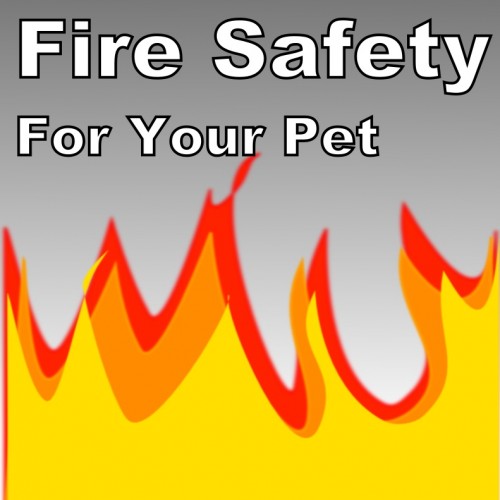Fire Safety for Your Pet
 One of the most devastating things that could happen to a home is a house fire. It can start and spread quickly, leaving massive damage in its wake. Being proactive to prevent house fires and having a fire safety plan in place for if a fire occurs can save your family and your pets.
One of the most devastating things that could happen to a home is a house fire. It can start and spread quickly, leaving massive damage in its wake. Being proactive to prevent house fires and having a fire safety plan in place for if a fire occurs can save your family and your pets.
Believe it or not, pets can be an accidental cause for house fires! Take time to pet proof hazard areas. Consider removing knobs from stoves and ranges when they are not in use. Dogs, especially, may jump up looking for food and unknowingly turn on these appliances. Consider also not burning candles in the home. Cats are prone to knocking things over, or a dog may bump in to a table where a candle is sitting and knock it over. LED candles are a great alternative if you want the lit candle ambiance in your home. Keep fire places screened off and inaccessible to pets. You’d be surprised how curious and close some pets may get to a fire.
With as many precautions as we take, we still cannot control all fire circumstances. In these cases, the best thing we can do is prepare. Include your pets as part of your family’s fire escape plan. First and foremost, it is important to have working smoke detectors on every floor of your home. Check that they are operating properly on a regular basis. An even safer option is to have a smoke detector that is connected to a home security system. If a smoke alarm is triggered while you are not home, the chances of your pet being rescued from a house fire are greater if the fire department can respond immediately. Know your pet’s normal hiding spots. During a fire, they will be frightened and confused and may seek the comfort of their favorite hiding spot in order to feel safe. Keep a window cling or sign that states how many pets and their descriptions in windows or doors. Knowing what animal they are looking for as well as how many are in the house will assist a firefighter if they need to search for your pets. These clings are available here at the office, as well as shelters and pet stores. For those who opt to confine pets to one room or a crate while you are not home, choose locations close to an entrance. Providing easier access to your pet will result in getting them out the house more quickly. Keep leashes and carriers easily accessible so you can grab your pet in a hurry. Again, your pet will be scared and may decide to run if not controlled. Once you have a fire safety plan in place, practice it with your family. Conduct fire drills at home that include your pets. Having a game plan before an emergency happens will improve the safety of both you and your pets.
